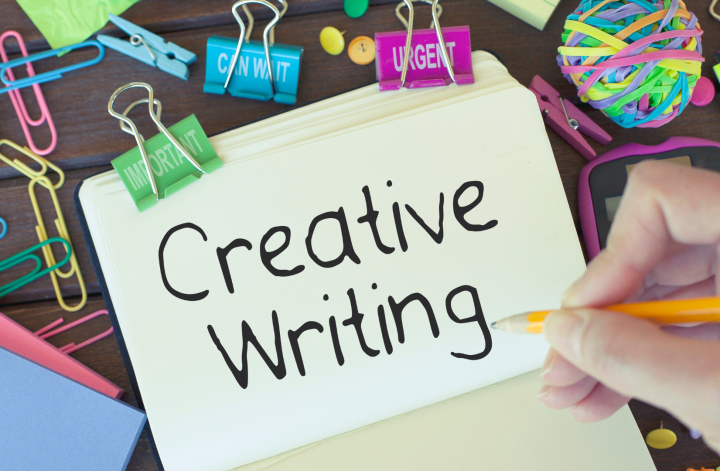Creativity in writing is one of the most important aspects of the craft. The very essence of writing is to craft a story or a narrative that engages your reader and doesn’t let them put down your work until they have reached the end. To do this, you need to show that you are not only well-versed in grammar, spelling, word choice, and so on, but also capable of using creativity to make your work stand out from the others.
The Meaning Of Creative Writing?
Creative writing is the process of creating a piece of writing that is both original and expressive. It can be done in many different genres, including fiction, poetry, and drama. Creative writers often use their imaginations to come up with new ideas or to find new ways to tell a story.
There are many different types of creative writing, but all of them have one thing in common: they are written to express the author’s thoughts, feelings, and emotions. Creative writing can be personal or fictional; it can be written for a specific purpose or just for fun.
No matter what type of creative writing you pursue, there are some basic rules that you should follow. First, always start with a strong opening sentence that will grab the reader’s attention. Next, make sure your grammar and spelling are correct. Finally, don’t forget to edit and revise your work before you publish it or share it with anyone else.
What Are The Outcomes Of Creative Writing?
Creative writing is an art form that allows writers to explore their imaginations and craft stories that are both unique and memorable. While there are many different benefits to pursuing a career in creative writing, the most important outcome is the ability to share your stories with the world.
Whether you choose to publish your work traditionally or through self-publishing outlets, getting your work out there for others to read is the ultimate goal of any creative writer. While success can be measured in many different ways, simply knowing that your work has touched someone’s life is often reward enough.
Of course, there are also more tangible outcomes that can come from a career in creative writing. For example, many successful writers can make a living off of their craft, which allows them to pursue their passion full-time. Others may find themselves working in more traditional publishing houses, using their creativity to help bring books and other written works to life.
No matter what your specific goals might be, pursuing a career in creative writing can lead to many rewarding outcomes. So if you’ve ever dreamed of being a writer, don’t let anything hold you back – start writing today, and who knows where your words will take you tomorrow.
What Types Of Writers Are There?
There are many different types of writers, but they can all be grouped into four general categories:
- Fiction Writers – the ones who write stories, novels, and other works of fiction. They use their imaginations to create characters, settings, and plots.
- Non-Fiction Writers – write about real people, places, and events. They may write biographies, history books, or articles for magazines and newspapers.
- Technical Writers – create manuals, how-to guides, and other documents that contain technical information. They need to be able to understand complex concepts and explain them in simple terms.
- Business Writers – produce reports, proposals, marketing materials, and other business documents. They need to be able to communicate complex ideas clearly and concisely.
How Can You Start Creative Writing
Creative writing is a process of continual discovery, and the best way to start is by following your curiosity. Write what interests you, what excites you, and what challenges you. Experiment with different genres and styles, and don’t be afraid to take risks.
The more you write, the better you’ll become at finding your voice and crafting stories that resonate with readers.
Here are a few tips to get you started:
Read Widely and Often
The more you read, the better you’ll understand how different writers approach their craft. As you encounter new styles and genres, pay attention to what works for you and what doesn’t. Then, when you sit down to write, you’ll have a richer understanding of the possibilities.
Start With Prompts
If you’re having trouble getting started, try using writing prompts to spark your creativity. Prompts can provide structure and direction, while still giving you the freedom to experiment.
Write Every Day
The best way to become a better writer is to write every day. It doesn’t have to be anything formal or fancy-just a few pages of free writing or stream-of-consciousness writing will do the trick. The more you write, the easier it will be to access your creative voice and tap into your imagination.
Know Your Audience
When you’re writing, it’s important to keep your audience in mind. Who are you writing for? What kind of tone and style will they respond to? Keep your readers in mind as you write, and tailor your stories to them.
Edit and Revise
The first draft is just the beginning. Once you have a complete story, take some time to edit and revise it. Make sure the plot is tight, the characters are well-developed, and the language is clear and concise. The more time you spend polishing your work, the better it will be.
Use Literary Devices
To add depth and dimension to your writing, try using literary devices like similes, metaphors, and personification. These devices can help you create vivid images and make your writing more interesting.
Be Patient
Writing is a process, and it takes time to improve. Be patient with yourself and don’t expect to be perfect from the start. The more you write, the better you’ll become. So keep at it, and don’t give up!
We hope that it has inspired you to pursue your own beautiful story. Whether you are a seasoned writer or just starting, remember to always follow your heart and let your imagination run wild. With a little bit of creativity and determination, anything is possible.
Happy Writing!










